DH has done it again: found a charming little hotel in a stellar location, this time in the Paul Valley of the island of Santo Antão, Cape Verde.
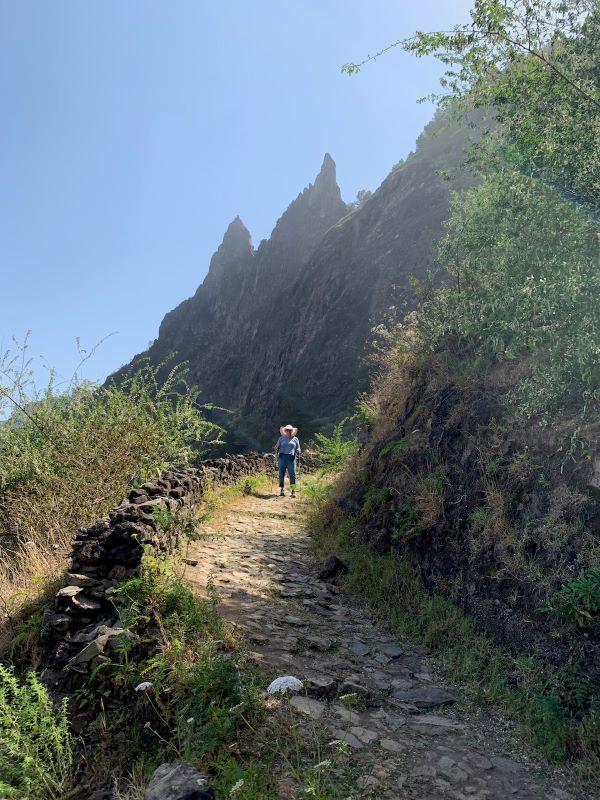
When we arrived at the ferry dock in Porto Novo we were met by Va, a driver from Casa Maracuja, the mountain hide-away where we would be staying. He said something about taking us up to see “the crater” on our way to the hotel. How lovely, I thought.
I looked around and couldn’t help wondering where all the greenery was that we’d read about. Bloggers and reviewers consistently wrote about the beautiful hiking on this island. They said they wished they could have spent more time on Santo Antão. How old were those postings, I wondered. Like the other islands, Santo Antão has had four years of drought. So as we began our drive I was a bit concerned to see more of the barren rock fields and jagged mountains that we’d seen on other islands.
Once we crossed over the first range of mountains, though, the greenery started to appear. There are a few natural springs and trickles of rivers on this island. You can see where they are, as the colour of the vegetation becomes a richer, lusher green the closer you get to the water sources.
As Va drove further and further up a zig-zagging cobblestone mountain road DH said, “Oh… I forgot: I’d booked for them to drop us off at the top of the crater and we’ll hike down from there to the hotel. They’ll take the baggage straight to the hotel.”
Forgot; yeah right.
We drove up further and started to see pine trees: a surprising sight on an African island. Va dropped us off amid the pines, leaving us with my hiking poles and our backpack filled with two big bottles of water.
“See you in a couple of hours.” He drove away.
After the previous hike (see Hiking the Serra Malagueta Natural Park in Santiago, Cape Verde) this was a bit worrying. But when I looked down and around me I couldn’t possibly be upset. The scenery was breathtaking. I’ve seen the insides of craters before, in Hawaii and Italy, but nothing like this. The entire base of the crater had been turned into small farm plots. A patchwork of sugar cane, corn, beans, three types of potatoes, cassava, coffee, cattle, and goats. Volcanic soil, combined with water and sunshine, turns out to be great for farming.
There is a straight line down the middle of the crater floor. The story is that each side was owned by a different family. In the generations since, they carved out plots for their children, who further subdivided for grandchildren, and so on. Thus the irregular shaped tiny plots that now exist. Seen from above it reminded me of a children’s story book drawing of farmer’s fields. Everything seemed toy-sized.

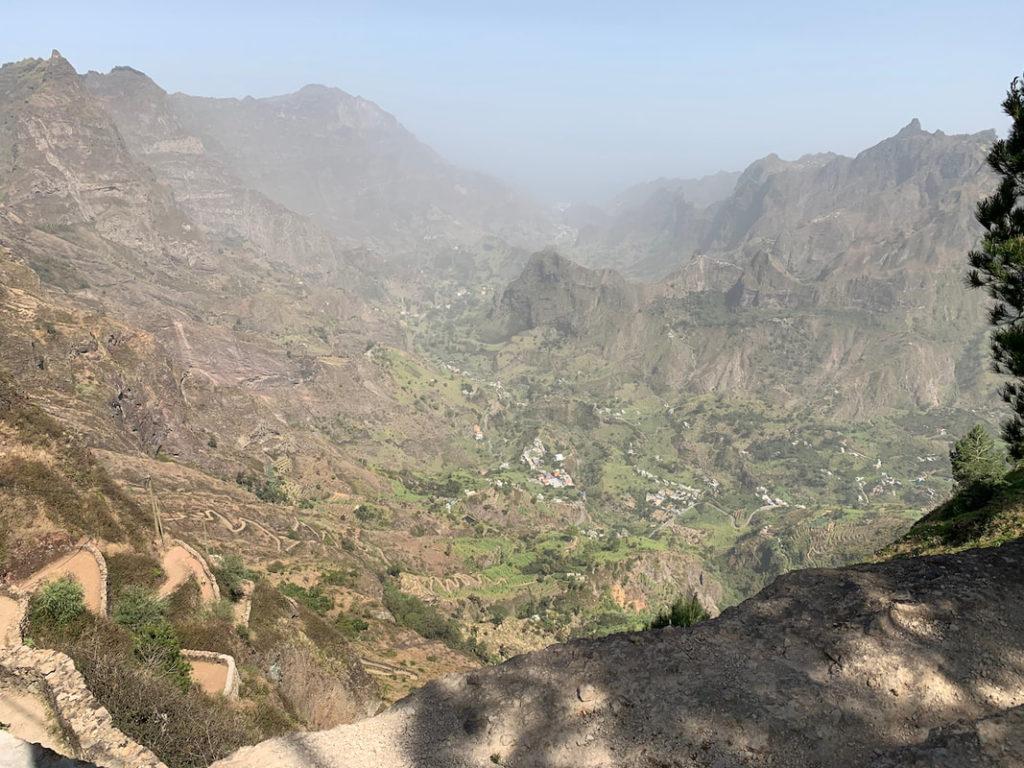
We climbed up and over the crater. Then we were greeted by another breathtaking view. We looked down on jagged chains of mountains and valleys, with green crops planted wherever a terrace could be built. Every nook and cranny that can be turned into a garden plot has been.
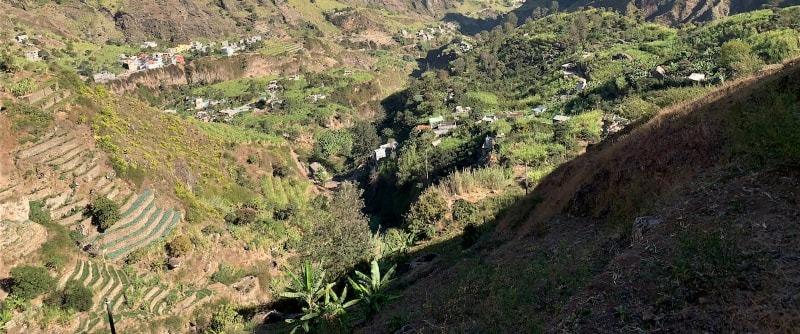
It is astonishing to see the neat, narrow terraces everywhere. High up in mountains. On the steepest of slopes. On narrow ridges. In little triangle crevasses at the bends of footpaths. In the riverbeds. It is hard to imagine how people managed to develop and plant many of these plots, let alone harvest them! Obviously everything is done by hand. It is backbreaking near-subsistence farming. Yet productive enough that most of the fresh produce consumed on the other islands comes from Santo Antão. (Except for the produce in the mega-resorts on Sal and Boa Vista. There’s no way the small local industry can cope with those demands. That food is shipped in from Portugal or Spain.)
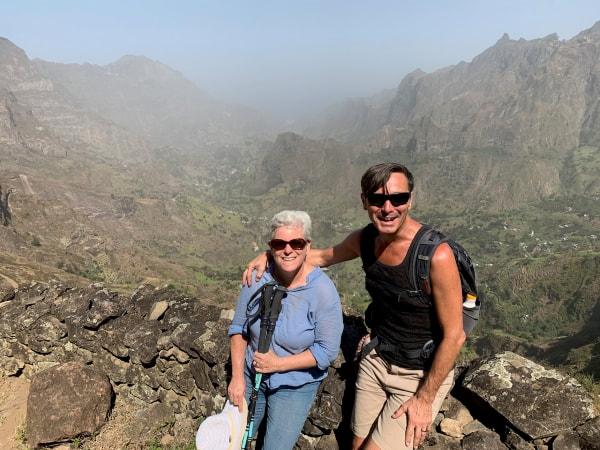
My knees ached as we wound our way down the steep switchbacks. The sun was hot. Fortunately, most of the path was cobbled, and wider than the paths we’d hiked on Santiago. I only almost-fell once, and there were just a few spots where I worried that if I tripped I’d fall off the side of the mountain.
What kept me going, though, was (were?) the views. Everywhere you looked was beauty. Mountains and tiny planted plots were all around us. Verdant valleys stretched out beneath us. Brightly coloured houses and tiny villages were perched precariously on knife-edged ridges. The fields were dotted with workers tending crops and harvesting sugar cane. Here and there was a donkey, waiting patiently for its master. Two goat kids frolicked on the edge of our path, racing to the safety of mama goat when they saw us.
As we got further down, music reverberated across the valley. People here love their music. They see no reason to play it quietly. It’s a good thing I like Cape Verdian music. It put a bounce in my step at a time when I was starting to wonder if we’d ever get to the hotel.
Eventually we saw the blue-green rectangle that was the hotel pool below us. (Pools are rare here, given the limited supply of fresh water.) It looked close yet there were still many more switchbacks to take before we’d get there.
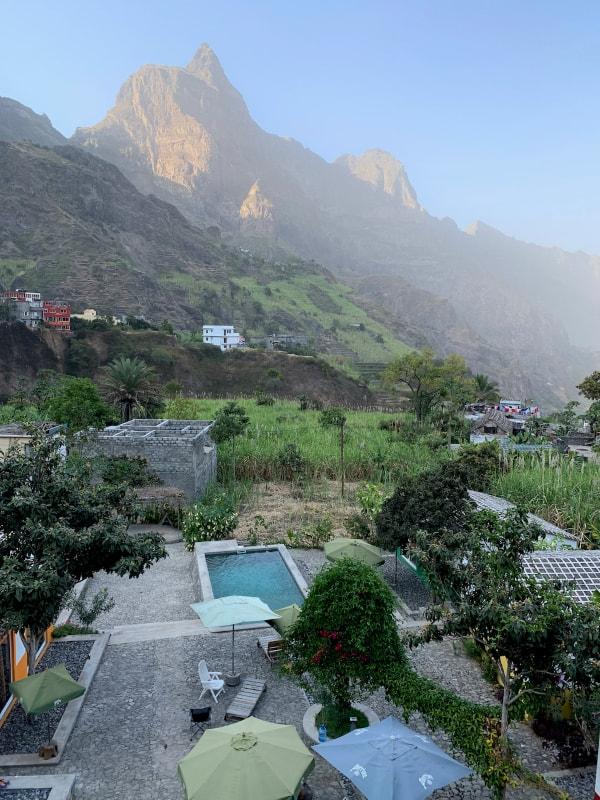
All told, the hike took us about three hours because my knees made us go slowly. The pool was no longer in the sun, and the water was chilly. It was great for “icing” my aching knees. The next morning my legs weren’t sore, and I was actually eager to do another hike. This gorgeous landscape begs to be explored on foot.


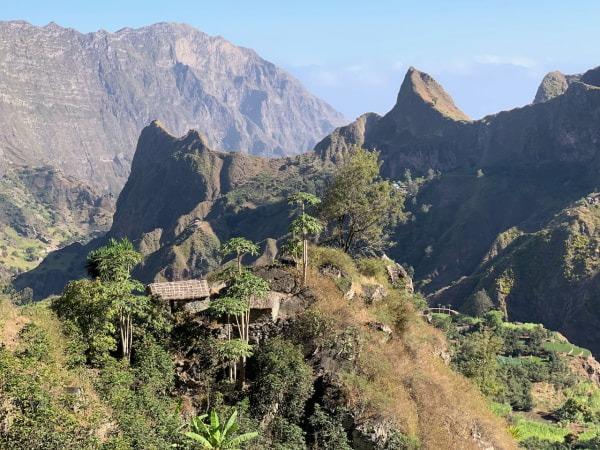

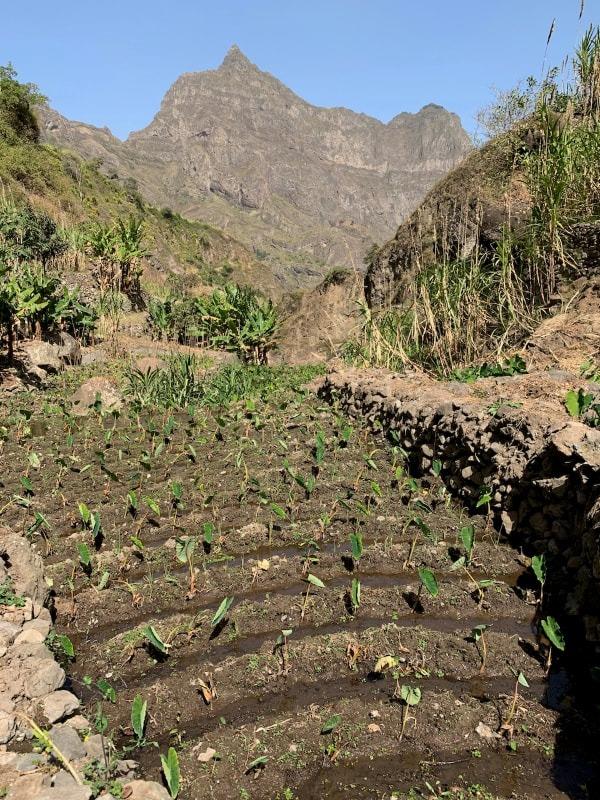
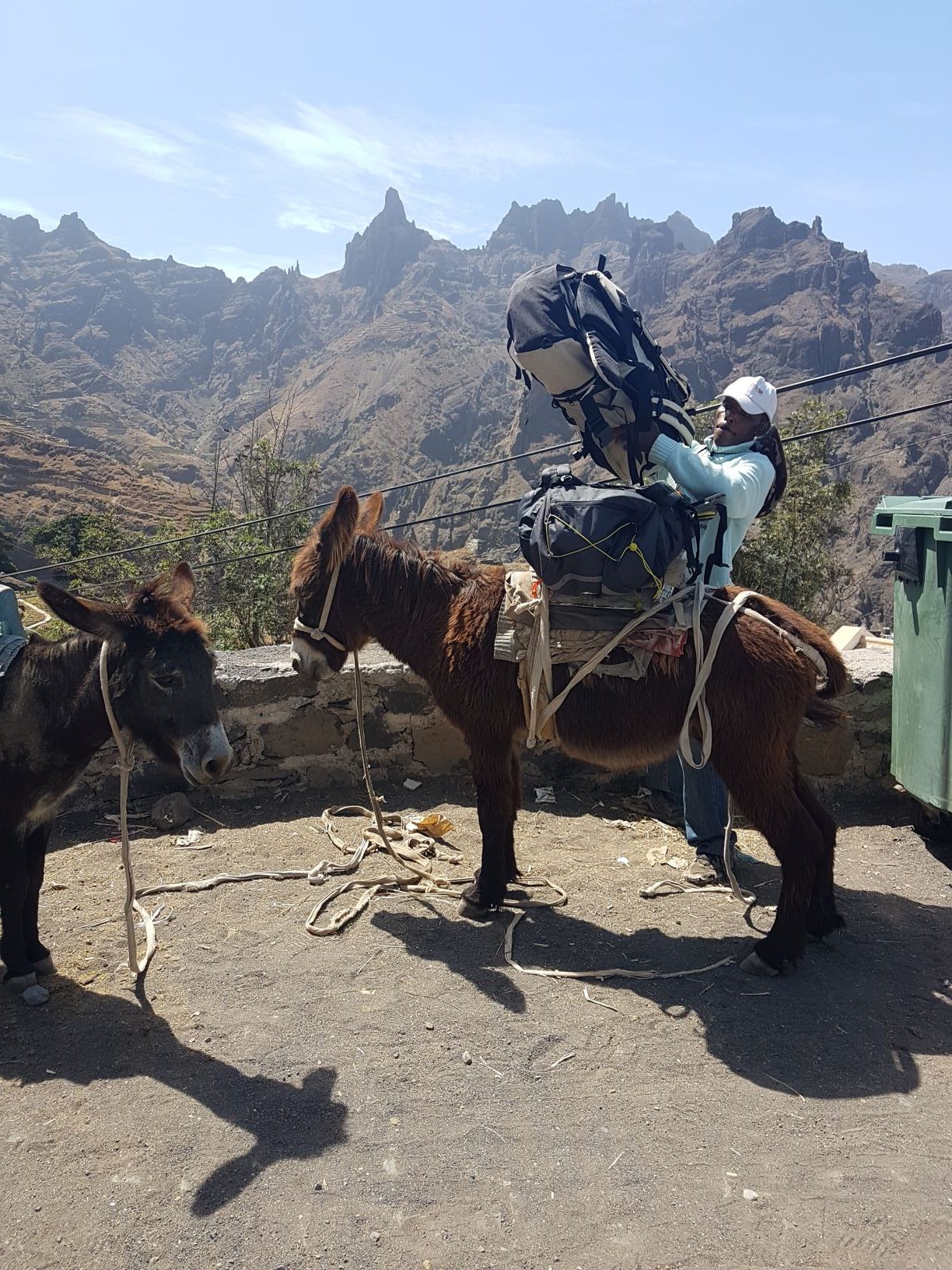
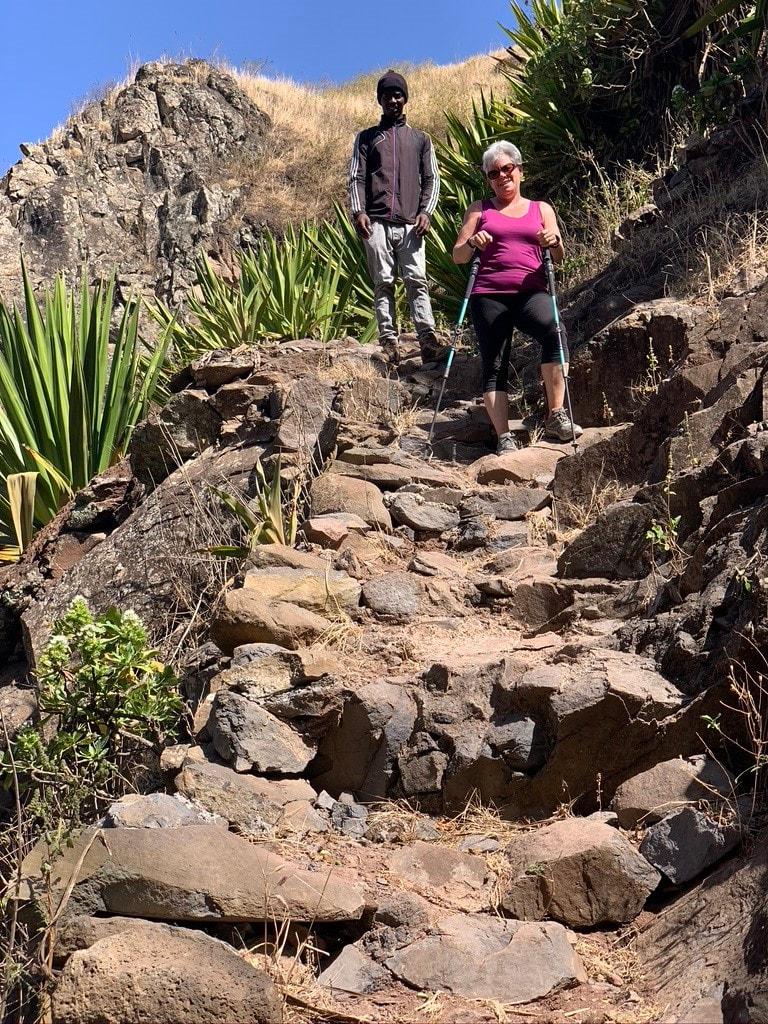
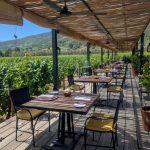
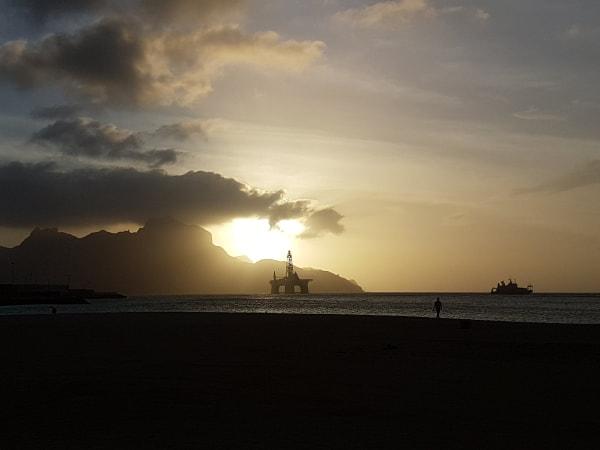
[…] first day we did a 3-hour hike down from the crater (see Casa Maracuja & Paul Valley Region, Santo Antão ). To my surprise, my knees and muscles felt good enough the next morning that I was actually eager […]